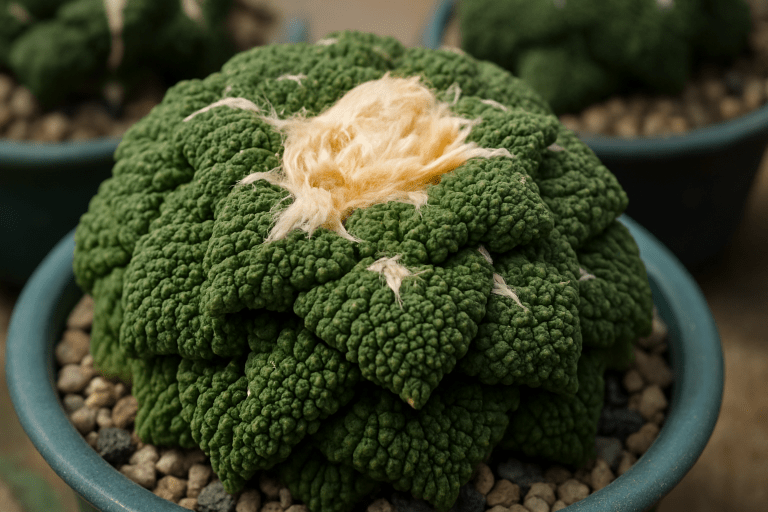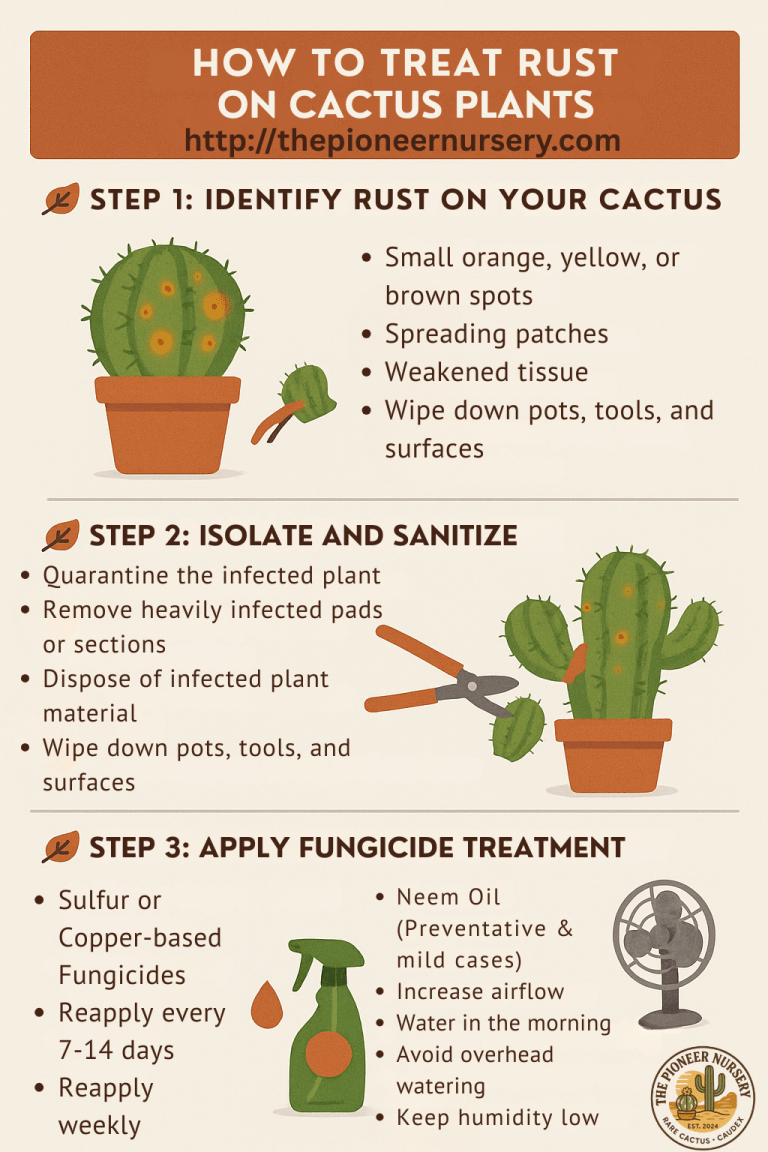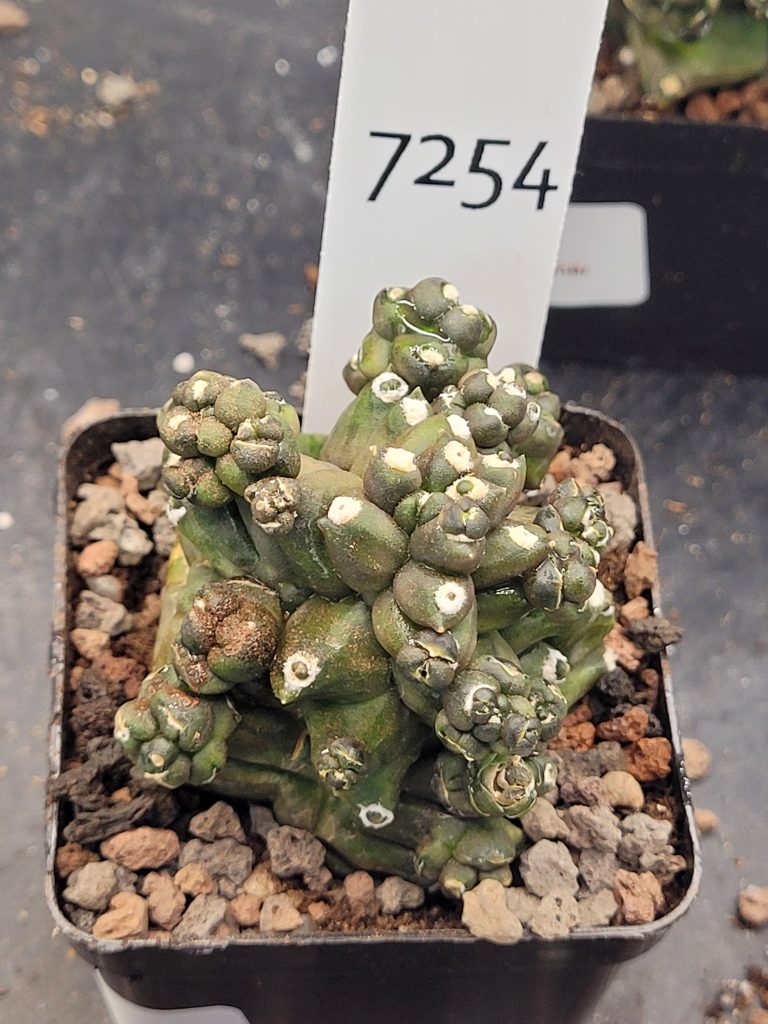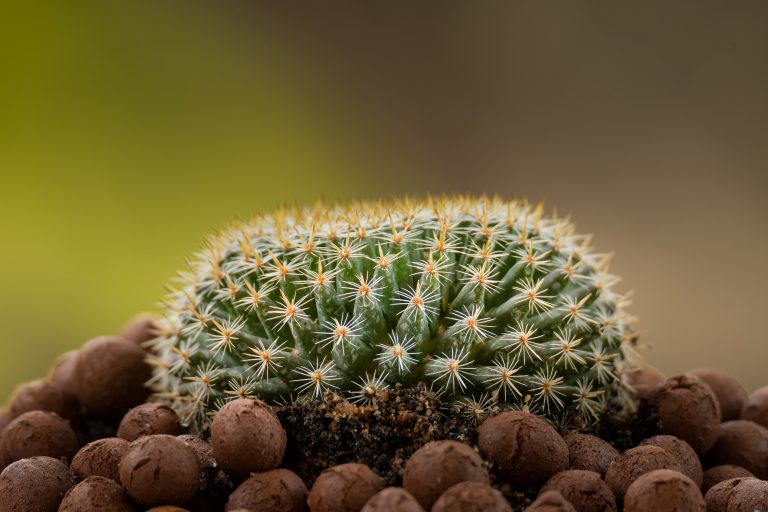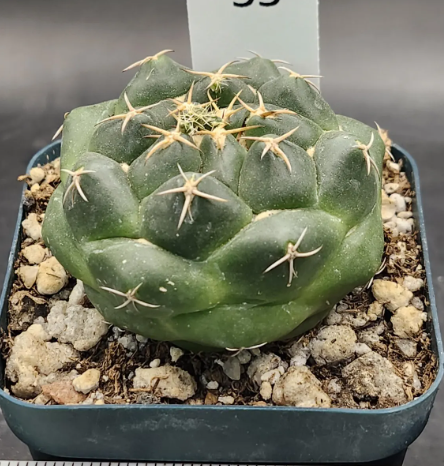Astrophytum caput-medusae is an unusual and rare cactus that has become a favorite among succulent enthusiasts for its unique, snake-like stems. When grafted onto the robust Ferocactus peninsulae, it gains added vigor and a stunning appearance. Caring for this grafted cactus requires understanding both the scion (Astrophytum caput-medusae) and the rootstock (Ferocactus peninsulae) to ensure a healthy and thriving plant. Here’s a comprehensive guide to help you succeed in growing this extraordinary specimen.
Light Requirements
Bright, Indirect Light: Astrophytum caput-medusae grafted on Ferocactus peninsulae thrives in bright, indirect light. Place it near a sunny window where it can receive plenty of light without being exposed to direct sunlight, which can scorch its delicate stems.
Temperature and Humidity
Warm Temperatures: This grafted cactus prefers warm temperatures, ideally between 70°F to 85°F (21°C to 29°C) during the growing season. It can tolerate cooler temperatures down to 50°F (10°C) but should be protected from frost and cold drafts.
Low to Moderate Humidity: Like many cacti, it prefers low to moderate humidity levels. Ensure good air circulation around the plant to prevent fungal issues and maintain a healthy growing environment.
Watering
Infrequent, Deep Watering: Water your Astrophytum caput-medusae grafted on Ferocactus peninsulae deeply but infrequently. Allow the soil to dry out completely between waterings. During the growing season (spring and summer), water approximately every 2-3 weeks, reducing to once a month or less in the fall and winter.
Avoid Overwatering: Overwatering is the most common cause of failure with this cactus. Ensure the pot has drainage holes and never let the plant sit in water to prevent root rot and other moisture-related issues.
Soil and Potting
Well-Draining Soil: Use a well-draining cactus mix or create your own by mixing regular potting soil with sand, perlite, and pumice. This ensures that excess water can escape easily, keeping the roots healthy.
Proper Pot: Choose a pot with drainage holes to prevent water from accumulating at the bottom. Terra cotta pots are a good choice as they allow moisture to evaporate, helping to keep the soil dry.
Fertilization
Balanced Fertilizer: Feed your grafted cactus with a balanced, water-soluble cactus fertilizer diluted to half strength during the growing season. Fertilize once a month from spring to early fall. Avoid fertilizing in the winter when the plant is dormant.
Pruning and Maintenance
Minimal Pruning: This cactus requires minimal pruning. Remove any dead or damaged stems to maintain the plant’s appearance and health. Be careful not to damage the graft union where the scion meets the rootstock.
Dormancy Period
Winter Dormancy: Astrophytum caput-medusae grafted on Ferocactus peninsulae will enter a dormant period during the winter months. During this time, reduce watering to once a month or less and stop fertilizing. Keep the plant in a cool, dry location with plenty of light.
Pests and Diseases
Pest Control: Keep an eye out for common cactus pests such as mealybugs, spider mites, and scale insects. Treat infestations promptly with insecticidal soap or neem oil to prevent damage.
Prevent Root Rot: Overwatering can lead to root rot. Ensure proper drainage and allow the soil to dry out completely between waterings to keep the roots healthy.
Propagation
Grafting and Seeds: Propagation of Astrophytum caput-medusae is typically done through grafting or seeds. Grafting onto a hardy rootstock like Ferocactus peninsulae ensures a stronger, more vigorous plant. Seed propagation is possible but requires patience and care.
By following these care guidelines, you can enjoy the unique beauty of Astrophytum caput-medusae grafted on Ferocactus peninsulae. With its fascinating, snake-like stems and robust growth, this plant is sure to be a conversation starter and a cherished addition to your cactus collection. Happy growing!

